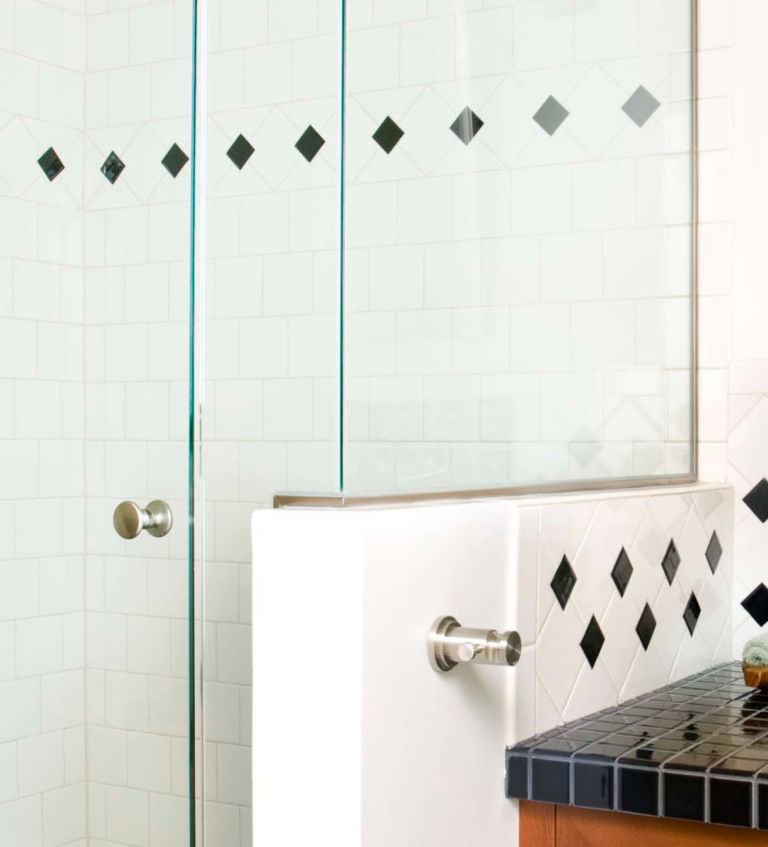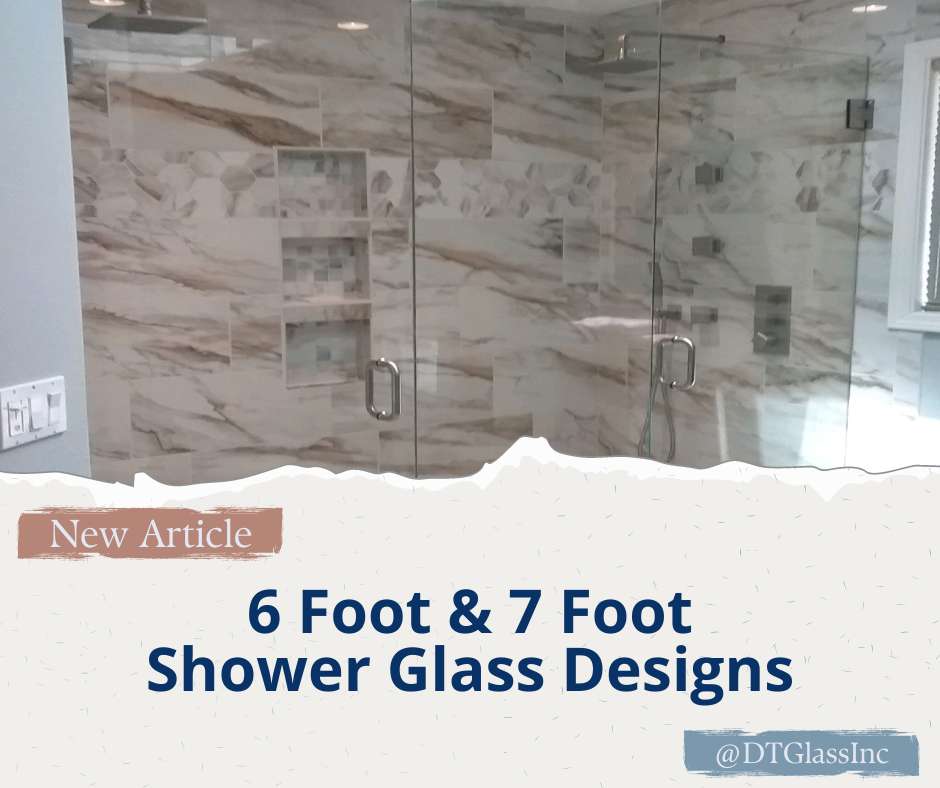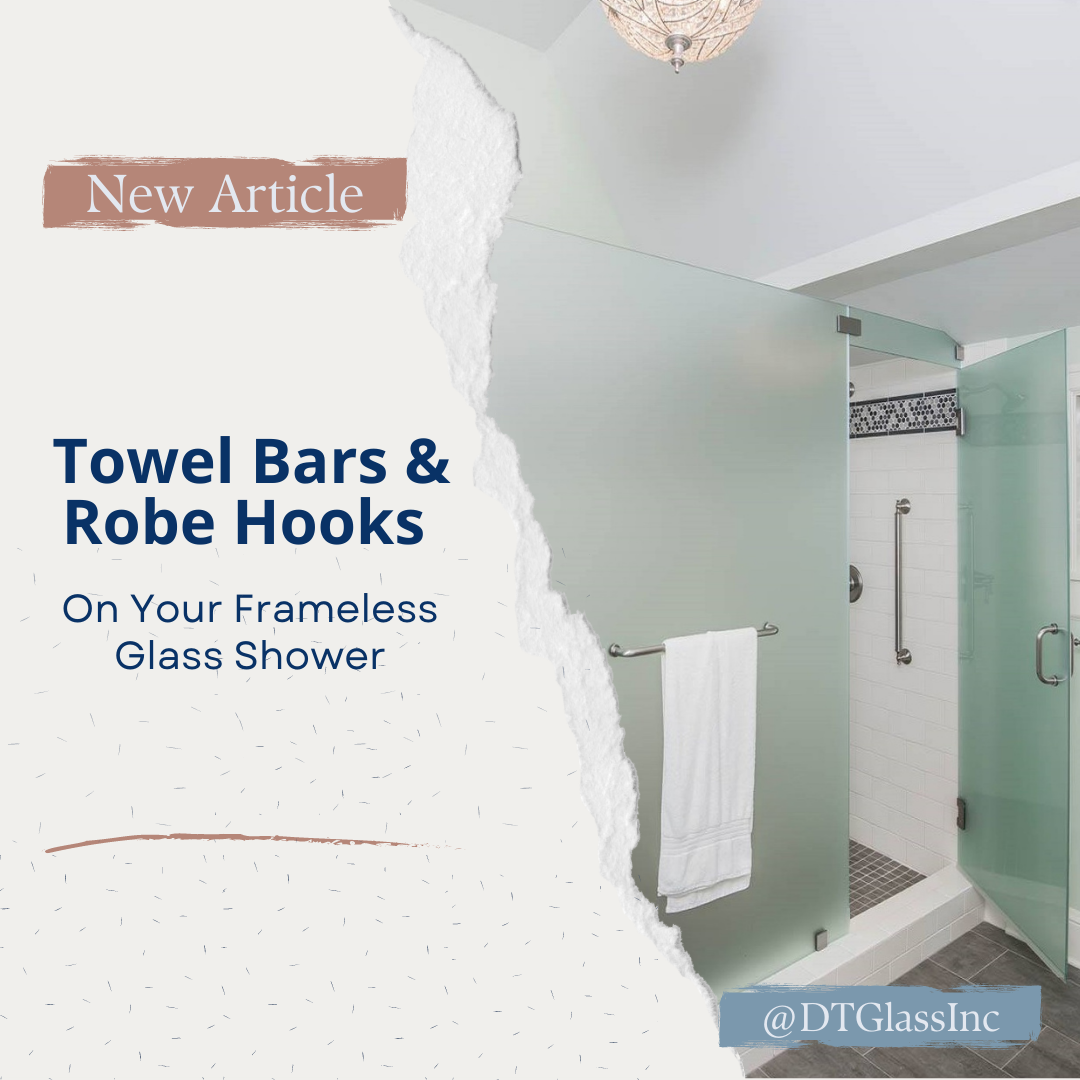
- glass@dtglassinc.com
- (503)-650-6373
PANEL ATTACHMENT METHODS FOR YOUR FRAMELESS GLASS SHOWER
By Shannon Mckinney – DT Glass, Inc.
When you choose a heavy glass shower (made with 3/8” or 1/2” glass) the panels aren’t framed with metal, but attachments are still needed to secure the glass to the wall and curb. We’ll explore the methods available.
The most important things to know about your choices are that they are all safe and secure, all offer the same water resistance, and all come in a wide variety of finish colors. The main criteria will be personal preference, along with some installation considerations.
Clips (Clamps)
When our customers talk about using as little metal as possible, they usually choose clips. Clips are 2”x 2” squares, leaving the rest of the glass to sit directly alongside the tile. It is a beautiful finished look for the shower.
Clips may be necessary in floor-to-ceiling panels where opening the face of a clip provides for easier installation than trying to manipulate the glass into a top and bottom channel.

Channel (U-channel)
Some homeowners feel that the ¾” continuous line of metal along the length of the glass seems to “disappear” compared to the square pieces of metal that tend to draw the eye. It’s certainly a valid point of view.
We recommend channel when we want to hide inconsistencies like bowed walls and irregular or wavy tile. Channel can flex to the wall and help mask the highs and lows of the tile.
We insist on channel when the shower curb is a fiberglass pan, cast iron tub, or a waterproofing system that cannot be penetrated.

Imbedded in Tile
Sandwiching the glass between thick and sturdy stone tiles or slabs creates a truly “frameless” look. The uninterrupted line from glass to curb makes the glass look like it’s simply balancing on edge.
This installation requires pre-planning and coordination with a tile setter who will set the stone to a designated line where the inside edge of the glass will sit, wait for us to install the glass, then return to set the material along the outside edge of the glass.
This installation method comes with some caution. Because the glass is literally “set in stone”, if the glass ever needs to be replaced, it will also involve removing and replacing tile.

Hybrid Installations
Imbedded Channel – To minimize the amount of metal that is visible, channel can be set within the tile instead of on top of it. In this installation, the tile setter puts the waterproofing in place, we set the channel, the tile is set on either side of the channel, then we return to install the glass.
Clip/Channel Combination – Any combination of clips and channel is possible. If a homeowner prefers clips, but channel is needed along a fiberglass curb, we can still use clips at the wall. If a panel is installed to the ceiling, we might be able to install one clip at the ceiling, with the rest of the installation in channel.
“The most important thing to know about your choices is that they are safe and secure”
Can’t you just glue it in? We get asked this question from time to time and we must answer with an emphatic NO. Silicone is certainly an important part of any shower installation. It creates the water-tight seal between the glass and tile, and when combined with metal fasteners, it adds stability and rigidity. However, silicone wears away over time and requires reapplication and maintenance. With mechanical fasteners, we’ve seen our shower installations last 10-15 years or more. With silicone only, a shower could fall apart from either neglect or an over-zealous cleaning regimen. We won’t put you or your family at risk.
Which look will you choose for your dream shower? DT Glass can help you decide on the right aesthetic for your space and your installation. You can create a shower that you love, while maintaining the safety and security that you and your family will appreciate for years to come. We’re available to discuss your specific project: by phone, through email, in our showroom, or an on-site consultation.




























